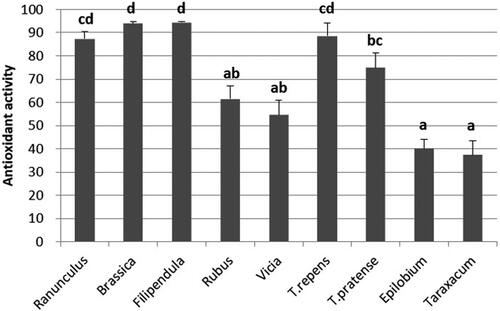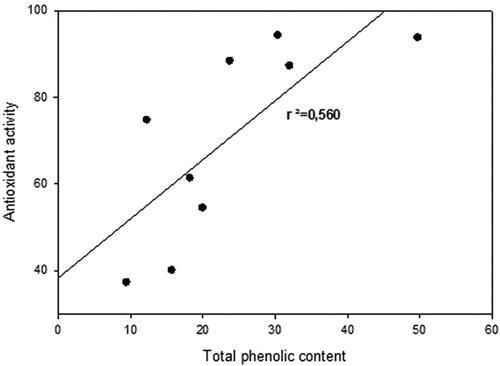Figures & data

Table 1. Botanical origins, colours and collecting places of pollen pellet samples.
Table 2. Protein (% DW + s.e.) content in pollen pellet samples. Statistically significant differences at p < 0.05 (Tukey HSD) are marked with letters a-b.
Figure 1. A) Distribution of detected phenolics in different phenolic groups (mg g−1 FW) and B) total number of individual compounds and number of identical compound levels in the pollen pellets of different botanical origins.



